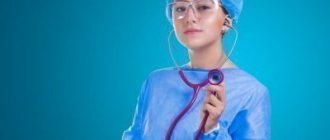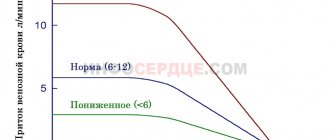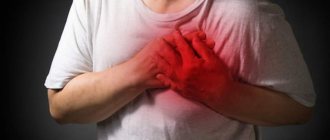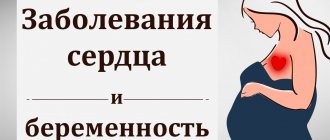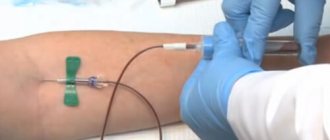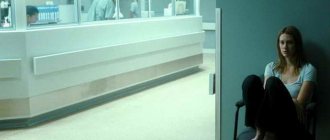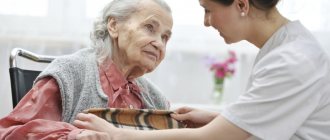Stroke is a disaster that can strike at any age. Increasingly, it is faced not only by the elderly, but also by people under forty who have many years of life ahead of them. Life after a stroke is a completely new and difficult experience for a person. In this article we will tell you what to do after a stroke, we will analyze the possibilities and limitations.
How to live a full life after a stroke?
Life doesn't end after a stroke. It can be almost full-fledged, filled with work, travel and entertainment. But this depends on many factors: the severity of the blow, the patient’s condition after the stroke, his mood, concomitant diseases, and proper rehabilitation.
The faster medical assistance is provided, the easier the consequences. It is most effective in the first 3–5 hours. If you notice signs of a stroke in yourself or your loved ones, call an ambulance immediately.
Complete extraction is not always possible. But the patient can adapt and become independent.
A prerequisite for recovery is long-term rehabilitation. Doctors recommend starting it on the first day - the patient needs to move, try to sit down.
Recovery continues both in the hospital and at home. For people with minor injuries, it is enough to endure some restrictions during this period: do not smoke, eat right, and follow all the doctor’s prescriptions. Patients with more severe injuries may permanently lose some function, but rehabilitation will help them adapt to these changes.
Household organization
— What difficulties do the patient’s relatives face, both at the everyday level and from various official organizations?
— The usual process of registering a disability and obtaining consumables—diapers and grooming supplies—takes time and effort. This is normal, but often difficult for relatives. It is worth trying to divide the task: hire a nurse, involve other relatives in care, etc. For recovery, there is a so-called “rehabilitation window” during the first year after a stroke. Then you will have to live with the changes that have come. The most productive of the first year are the first three months. Don't miss this time when the degree of disability can still be changed. Focus your recovery efforts on this time frame.
Question answer
Where can I go for rehabilitation?
Do not limit the patient if he is trying to be active and independent. Overprotection blocks recovery. Give him the opportunity to wash, dress, eat on his own - albeit slowly, with mistakes, but on his own. He will learn.
At the same time, avoid hypermotivation “I will become the same!” This is the path to depression. The patient will not become the same, it is impossible. But his life goes on, and he needs to make it as complete as possible.
Don’t forget about yourself, so as not to break down - you should plan your vacation, divide the workload between family members and other relatives, try to hire a nurse, contact social services at your place of residence, ask for help from volunteers. There is no need to put everything on yourself - this will not help the patient and will ruin the life of the caregiver.
— How to make a number of standard actions easier, for example, walking in the fresh air, if you are seriously ill after a stroke?
— Walking requires patient mobility, albeit limited, or a wheelchair and ramps. If there is nowhere to go for a walk, it is enough to sit on a bench near the house or park the stroller for half an hour at the entrance (of course, on the stopper). Fresh air and impressions will be received.
Article on the topic
Stroke: symptoms, first aid and types of rehabilitation
It is necessary to additionally begin speech exercises, which will be prescribed by a speech therapist. Avoid playing TV or radio “in the background” - this gives the effect of so-called “depreciated speech”, when words cease to have meaning. Speak to the patient not too quickly, not in long sentences, making 3-4 second pauses between phrases. If speech is difficult, but thinking is fine, try to develop a sign system - “drink”, “turn over”, “plant”, “hurt”. Try to sit a patient with impaired speech near a window, if possible, take him for a walk, for bedridden patients - on the wall where the gaze is directed, hang a calendar and turn the pictures over every day. Visual stimuli help restore speech; their absence inhibits this restoration.
— What exercises are there for patients who have suffered a stroke, which contributes to their recovery?
— Exercises are offered individually by an instructor or a physical therapy doctor and are constantly adjusted depending on the achieved (or not achieved) result. Do not try to do anything yourself: massage the paralyzed arm, pull, shake, turn. These well-intentioned efforts by relatives result in regular injury. Every fifth patient we see at the foundation after a stroke has a subluxation of the head of the shoulder joint on the affected side, and sometimes damage to the small bones of the hand. This is the result of the “help” of relatives.
Stop the blow. How to recognize a stroke in time
More details
Hemorrhagic and ischemic strokes: which one is more dangerous?
Hemorrhagic stroke is accompanied by rupture of blood vessels in the brain. Because of this, hemorrhage and swelling of the organ occurs. This type is the most dangerous and difficult to restore. The person's condition is very serious. Hemorrhagic accounts for twenty percent of the total number of strokes. Most of the survivors become disabled.
The ischemic type is more common. When it occurs, blood vessels become clogged and blood circulation in any part of the brain is disrupted. Because of this, cells are destroyed and the patient's body functions are impaired.
Help and support from relatives is an important factor for recovery
Doctors emphasize that the support of relatives and friends is extremely important during the rehabilitation period. Households contribute to a quick recovery: they help with household chores and gymnastics. The patient benefits from communication to restore speech.
During this period, loved ones need to show sensitivity and attention, but at the same time, patience and perseverance. To fully recover, the patient must train skills and develop damaged parts of the body. But often he only wants to lie down and does not understand why he needs to move. And those around him indulge him in this. Relatives should soberly assess his condition and not overdo it with care. A person after a stroke, if he is able, is recommended to eat, walk to the toilet, and take care of himself. Then he will sooner return to a full life.
It is useful for the patient to discuss his condition with loved ones. This helps avoid depression after illness. To restore speech and memory, they talk to a person about the past, recall incidents from life, and look at photographs.
General rules
Before discharge, the doctor explains in detail what care should be like after a stroke and gives recommendations: how to provide a person with a normal standard of living at home, help restore impaired functions and prevent possible complications.
Despite the fact that the condition of patients upon discharge is different: some can move and even partially retained self-care skills, while others are immobilized and need constant assistance, there are general rules for caring for patients after a stroke at home:
- providing adequate nutrition;
- prevention of bedsores;
- prevention of possible complications (congestive pneumonia, thrombosis, etc.);
- assistance in post-stroke rehabilitation (massage, gymnastics, etc.);
- psychological support.
Stroke patients require constant attention, and relatives should distribute responsibilities in advance: who will cook, wash, and care for the patient.
It should be remembered that post-stroke recovery lasts several years. How a stroke patient is cared for after discharge largely determines whether the person will be able to learn to walk and talk again, or whether he will remain bedridden forever.
Depression after an illness
A sudden stroke is a blow not only to the body, but also to the psyche. Often patients and their relatives become depressed. A person experiences despondency and anger because he has lost his usual skills, cannot work, support his family, or do what he loves. He becomes irritable and whiny, transmitting his mood to everyone around him. This affects his relationship with his family. It is difficult for them to get used to the new situation and be patient.
Depression after a stroke is common, affecting up to half of all patients. It appears both due to the psychological consequences of the disease and due to brain damage.
During this time, it is important to remember that most problems are real, but temporary. The quality and speed of rehabilitation depends on the patient’s mood. The patient and his relatives are recommended to consult with a psychologist. In severe cases, the doctor refers the patient to a psychiatrist for treatment with antidepressants. Remember that there is nothing wrong with this. Mental health is just as important as physical health.
The promised one has been waiting for three years
Of course, it would be better to send a person who has suffered a stroke to a rehabilitation center, where he would receive all the help necessary to restore his health. I also came to this conclusion when, after transporting my mother from the hospital home on the very first night, I had to call an ambulance. As a result, my mother again ended up in the hospital, where she was kept for about two weeks, during which I, having raised everyone I knew, received several tips on rehabilitation centers.
According to official documents, stroke patients can recover at a government rehabilitation center for free, but I was told it could take at least two months to wait for a place to become available.
Question answer
At what age is the risk of stroke greatest?
Other centers are paid. In some, a day of stay costs 12 thousand rubles or more (depending on the patient’s condition and his needs). In one of those where I applied, they calculated that I would have to pay 16,500 rubles per day.
There are centers that are much cheaper - with a starting price of 3 thousand rubles for being there, and other services for a fee. This option seemed acceptable to me, and I arranged a meeting with the manager. However, after a conversation with her, during which I was asked the questions “Who will take care of your mother?” and “We only have classes once a day, but we need two. Who will do the extra work?”, I realized that, even having paid for rehabilitation, I would be forced to do everything myself that I did during my mother’s illness: change diapers, wipe off bedsores, do physical exercises with her, as well as with my own efforts trying to restore her ability to speak and live the way she lived before.
Physical inactivity and stress. A doctor explains why strokes have become 10 years younger Read more
Factors influencing life expectancy after stroke
The quality and length of life depend on several factors:
- Danger of recurrent hemorrhage. A second blow reduces life expectancy to 2–3 years.
- Type of impact. With the hemorrhagic type, the likelihood of death is higher
- Extent of damage: with large damage, the lifespan is reduced.
- Developing complications lead to the formation of other symptoms that worsen the quality of life.
- General health.
- Presence of paralysis: they contribute to the formation of blood clots, increasing the risk of another stroke.
- Patient safety. Due to lack of coordination and weakness, he may get injured.
Lifestyle after a stroke
In order to recover as much as possible, the patient needs to change his lifestyle. The first is the mandatory and regular use of all medications prescribed by the doctor.
Regular physical activity is very important. In addition to special gymnastics, it is useful for the patient to engage in walking and moderate activity every day - playing with children or grandchildren, pets, cleaning, gardening, riding public transport. Sometimes light sports are recommended: patients go to the pool or do yoga. If there are no problems with coordination, cycling is possible. Even if a person moves in a wheelchair, he can exercise with dumbbells and do special exercises.
To protect yourself from a second blow, you need to eliminate risk factors. This:
- excess weight;
- passive lifestyle;
- smoking and alcohol;
- stress;
- high pressure.
Is it possible to smoke after a stroke? It is forbidden. Old habits will have to be abandoned. Smoking after a stroke is strictly contraindicated, as it increases the risk of blood clots.
Stroke
One of the most difficult diseases in terms of treatment and recovery is stroke . Depending on the pathogenesis, diseases of ischemic and hemorrhagic types are distinguished. In the first case, due to disruption of cerebral blood supply and lack of blood flow, necrosis of brain tissue occurs. In the second, hemorrhage occurs through destruction in the walls of blood vessels.
For reference. The reasons leading to different types of stroke are the same. These are high blood pressure, atherosclerosis, tumors. Factors such as obesity, physical inactivity, constant tension, overwork, and bad habits increase the risk of a stroke.
An important difference in the development of hemorrhagic stroke and ischemic stroke is that in the first case, too thin blood leads to a stroke, in the second - increased viscosity. This difference plays an important role in diagnosis, treatment and subsequent recovery.
Recovery period
The recovery period lasts on average up to two years after the impact. It is divided into early and late - up to 6 months and up to several years. It begins in the first days after a stroke, when the patient is in the hospital. Then he is transferred to the rehabilitation department. In the early period, body functions are restored in the following ways:
- medicines;
- kinesiotherapy;
- massage;
- psychotherapy;
- physiotherapy;
- gymnastics: yoga, swimming.
First, the patient re-learns to control the body and make simple movements - get up and sit down. Then occupational therapy is involved: simple everyday skills are restored. To work on speech, they work with a speech therapist.
To correctly determine the rehabilitation program, you need to talk with your doctor about the goal. With hard work, after 6 months the patient can return to work and hobbies.
Depression is dangerous for stroke survivors
On the Komsomolskaya Pravda direct line about stroke, Lyudmila Anatskaya, a neurologist, candidate of medical sciences, leading researcher at the Republican Scientific and Practical Center for Neurology, answered several dozen questions from readers.
Excess weight is a problem for the brain
— Lyudmila Nikolaevna, I’m from Minsk, Larisa Ivanovna, I’m 63 years old. A couple of weeks ago I was in the hospital with a hypertensive crisis. I saw enough of everything there. How can I protect myself from a stroke?
— The most important thing is to avoid hypertensive crises. During a hypertensive crisis, the permeability of the arteries of the brain changes, blood plasma proteins can penetrate into the brain tissue, and even lacunar infarctions can occur. The stroke itself often occurs due to such crises. It is necessary to select an adequate treatment regimen to control blood pressure. Doses of medications, if they are not effective enough, need to be adjusted every six months. How is your cholesterol and weight?
— Cholesterol has increased, and with a height of 163, I weigh 82 kilograms.
- You're overweight. You also have a risk factor for type 2 diabetes. You definitely need to reconsider your diet. Count the calories, you need to eat multiple times and in small portions. And you should try to walk to and from work. You need to lose weight evenly; in a year you need to get rid of the extra 10 kilograms.
— Does olive oil lower cholesterol?
- No, it simply does not contribute to its increase. It is better to add it to salads and stewed vegetables. Also, limit salt - this also helps with weight loss. Flour and sweets are generally enemies of health. And yours in particular is overweight.
— And another question: can I go to the bathhouse?
- If the pressure is unstable, a bath is not indicated. In the bathhouse they sweat, fluid comes out, blood thickening can occur, and if this coincides with an increase in pressure, you can get a stroke.
— They are bothering me from the Brest region. There were micro-strokes, and constantly high blood pressure. Doesn't decrease. I am seeing a cardiologist in Ivatsevichi, two years ago I was in the cardiology department of Brest, and they prescribed how to treat me...
— I cannot give recommendations over the phone without seeing all the examination results. You should contact the Brest Cardiology Clinic, undergo 24-hour Holter blood pressure monitoring and adjust your treatment. In general, if you see that the prescribed treatment is ineffective, you need to consult a doctor again and select the necessary therapy.
If you suspect a stroke, call an ambulance!
— What to do if a stroke occurs?
— A stroke is an emergency, you need to call an ambulance right away, no refusal of hospitalization! The hospital will determine whether the stroke occurred - hemorrhagic or ischemic, and treatment will be carried out depending on the type of stroke. Treatment is most effective in the first hours - with prompt initiation of treatment for ischemic stroke, you can generally do without consequences for your general health. And for the first two weeks, every patient must stay in the hospital. Waiting for everything to go away on its own is the most dangerous practice.
— Is it true that you need to take glycine in the first hours after a stroke?
— Efficiency has not been proven. The main thing is to call an ambulance as soon as you realize that a stroke has occurred.
— Georgy Lukich from Liozno, I’m 75 years old. What can be done so that I can walk normally? After a stroke in 2008, I often fall. Since he broke his arm, he fell.
— Unfortunately, after a stroke, all motor functions and coordination of movements are not always restored. And the body recovers quite quickly within six months, then recovery slows down, but still lasts about two years. After that, recovery stops, and you need to get used to what you have and keep in shape so that it doesn’t get worse. You need to buy a walker, it is a good walking support. This is still rare for us, but in Europe many people who have difficulty moving use walkers and are not embarrassed about it.
— My mother had a stroke on September 27. What to do in the first weeks of a stroke?
— Your mother is in the early recovery period of a stroke. It gives every chance for the best possible recovery. You need to go to the regional clinic in the rehabilitation department, where your mother can undergo an outpatient rehabilitation course. You will also need to constantly encourage the mother to perform the prescribed therapeutic exercises at home.
What to do if life loses meaning?
— My father, he is 54 years old, had a heart attack, then in March a cerebral infarction. At first he walked on his own. Then he got worse and stopped walking. But the biggest problem is that he cannot swallow, he has a tube. He had a cold, he was coughing, and the sputum could not come out.
— Often after myocardial infarction, parietal blood clots form near the focus of necrosis, and these blood clots can “shoot” into the brain, causing strokes or cerebral infarctions. Most likely, the blood clot shot again. If there is sputum, the father needs to be admitted to the hospital so that the sputum can be removed using a special suction. Swallowing function, since the brain infarction happened not so long ago, may still recover, you need to take neurotropic substances that stimulate the functioning of the brain stem, or rather, the doctor who treated him in the hospital should explain everything to you.
- His desire for life has been trampled...
- This happens after strokes. He should be prescribed antidepressants - serotonin reuptake inhibitors. They not only improve mood, but also help restore motor functions and the brain stem (if swallowing is impaired, most likely there is an infarction in the brain stem). These drugs are mandatory - depression is the cause of death in 40% of stroke survivors.
STAY IN TOUCH!
Ischemic stroke occurs when the arteries of the brain are blocked by a blood clot or cardiac embolus, as well as when there is a sharp decrease in blood supply to the brain due to weak heart function or low blood pressure. About 80% of strokes are ischemic.
Hemorrhagic stroke occurs when cerebral arteries rupture. About 20% of strokes are hemorrhagic.
Infographics
In ischemic stroke caused by atherothrombosis of large cerebral arteries:
- after 14 days, 1.2 billion neurons die, and life is shortened by 36 years;
— within the first hour, 120 million neurons die, life is shortened by 3.6 years;
- 1.9 million neurons die in 1 minute, a person loses 3.1 weeks of life;
- 32,000 neurons die in 1 second, a person loses 8.7 hours of life.
IT IS IMPORTANT TO KNOW!
How to determine that a stroke has occurred?
A stroke can happen at any age. Only 33-50% of patients realize that they have stroke symptoms. You can determine if your loved one has had a stroke with a simple Face-Hand-Speech test.
Face: Ask the person to smile. Pay attention to whether the smile is symmetrical.
Arm: Ask to raise both arms to horizontal level. Doesn't one hand drop?
Speech: Ask the patient to repeat a simple phrase. Is the speech intelligible, does it seem strange?
If you notice at least one of these signs, immediately dial 103 and call an ambulance!
If a person with a stroke receives treatment within three hours, there is a chance that the consequences of the disease will be minimal.
Healthy approach to nutrition
In the period after the illness, it is important to prevent the formation of blood clots. Therefore, doctors recommend leading a healthy lifestyle and paying attention to nutrition: it is necessary to reduce the content of fat and cholesterol in the diet. Include more of these foods in your diet:
- fruits and vegetables;
- cereals;
- lean fish and meat;
- dairy products.
Excluded from the diet:
- fried foods;
- red meat;
- confectionery;
- food with palm and coconut oil;
- pickles;
- energy.
During the early recovery period, the patient has difficulty chewing and swallowing food. Let the food be cut into small pieces. DO NOT cook anything hard or sticky.
Returning to work
Patients ask the question: “When can I return to work?” If a person has undergone rehabilitation and feels well, then he is sent to a medical labor commission. Doctors check on it:
- restoration of mental abilities;
- mental condition;
- degree of impairment of speech and vision functions;
- muscle tone;
- cardiovascular system;
- coordination of movements.
If the commission sees that the consequences are minimal, it will issue a permit. The employer will be obliged to provide a position that does not conflict with the employee’s health condition. When working after a stroke you should avoid:
- intense physical and mental stress;
- noisy rooms;
- interactions with toxic substances;
- prolonged sitting in one position.
Even if returning to your old job is impossible, there are several options for returning to work:
- freelancing;
- distant work;
- half-holiday;
- work according to an individual schedule.
Doctors' experience shows that some patients return to work even after several strokes.
How to treat the consequences at home?
Despite the fact that ischemic stroke involves narrowing and blockage of blood vessels, vasodilators from a home pharmacy no-shpa or papaverine should not be given, they can only worsen the patient’s condition.
Drug therapy
Treatment drugs are divided into several groups, depending on the symptoms of the pathology and dysfunction of the body.
Relatives of the patient need to know that treatment is not only timely medications taken. This is a whole range of measures for the speedy return of lost body functions to patients. Drug treatment is prescribed to support the neurons of the brain. A stepwise treatment strategy is used - from droppers to tablets.
How to cure the consequences of the disease at home:
- Antidepressants are prescribed for headaches. Analgesics do not help in this case. Sedative and anticonvulsant drugs are required, including the most harmless ones - pantogam, glycine, phenibut. Vinpocetine is prescribed for severe headaches.
- For muscle pain, analgesics are prescribed.
- Cognitive functions (speech, hearing, memory, speech) may be lost completely or partially. Nootropic drugs are prescribed for recovery. Lecithin, Semax, picamilon, microzer and a number of more complex drugs. Rehabilitation of cognitive functions is carried out through physical exercises and activities.
- Restoring the functions of the pelvic organs, includes drugs to improve blood microcirculation in the genitourinary system. Antimicrobial therapy and hormonal therapy are also required for normal urine storage and bladder emptying. Decongestants and diuretics.
- Psychotherapy. Drug treatment is prescribed to maintain the patient’s psycho-emotional state. Bemitil - for a psychostimulating effect.
- Gliatilin – improves mood, relieves irritability.
- Vitamin complexes – for general strengthening of the body.
Important! Drug treatment is prescribed by the attending physician or a council of doctors for each case. You cannot give medications to a patient yourself; self-medication is unacceptable!
Driving after a stroke
Is it possible to drive a car after a stroke? This issue is resolved by the attending physician.
You can return to driving a car no earlier than three months later, if the damage was minimal. Patients experience difficulty driving due to poor coordination and vision.
Therefore, driving until fully recovered is dangerous for the driver and passengers. To be sure that a person is ready to return to the wheel, a special test is carried out in the presence of an instructor.
People whose profession involves driving are worried about whether they can work as a driver after a stroke. This should be determined by a special commission. Unfortunately, most often she recommends changing your profession.
Care
In recovery after a stroke at home, much attention is paid to care. The room in which a person spends the most time must be kept clean and tidy. Be sure to ventilate it every day. At the same time, it is important not to give the patient a cold. A weakened body after a stroke is susceptible to infectious diseases and pneumonia.
Preparations are made to provide the patient with the necessary care even before he is discharged. You need to purchase special diapers, a bedpan, and a mattress against bedsores. Place a pole or hang reins next to the bed so that a person can pull himself up, sit down, and stand up. It is advisable to lay a thick soft carpet near the bed. An accidental fall will reduce pain.
An unfortunate fall may result in serious injury. The author of these lines’ father fell unsuccessfully after standing up abruptly. This fall resulted in a transition into a coma followed by death after 10 days of coma.
In the morning and evening, it is advisable to wash the stroke victim or at least wipe him with a warm, damp towel. His eyes and mouth are washed and his teeth are brushed.
For reference. To prevent bedsores, the sheet is pulled so that there are no folds, and all the crumbs that remain after eating are removed. The immobilized patient is turned on his side every 2 hours. When bedsores form, they are treated with an alcohol solution and talc.
Travel and tanning
Illness does not mean a complete refusal to travel. Often relatives seek to take their loved ones to a sanatorium for rehabilitation. Is it possible to go to the sea and sunbathe after a stroke? Yes, if you are careful. You can travel south and sunbathe after going through the early recovery period. Here are the main rules:
- control the pressure level;
- wear a hat;
- do not go outside between 12:00 and 16:00;
- watch how much liquid you consume;
- do not go out into the open sun.
Bath and sauna
Bath lovers are wondering whether it is possible to take a steam bath after a stroke. This is decided by a neurologist.
During the recovery period, he strictly limits the period of stay in the steam room. When used correctly, a bathhouse can even be beneficial. It helps in rehabilitation: it relaxes muscles and improves blood circulation.
Life statistics after a stroke
Secondary stroke occurs in 10-15% of people during the year. In the first 5 years it occurs in 25% of women and 45% of men. This is why rehabilitation is so important.
About 12 million strokes are recorded worldwide every year. Half of them end in death. In Russia, 450 thousand people encounter it.
75% of patients under forty and 60% of people over 50 survive and are rehabilitated.
So, a person after a stroke can live a full life or restore many functions. This requires careful and long rehabilitation. If you follow all the doctors' recommendations and take medications, the patient has a chance of returning to work and social activities. But he will have to reconsider his lifestyle and make it healthier.

